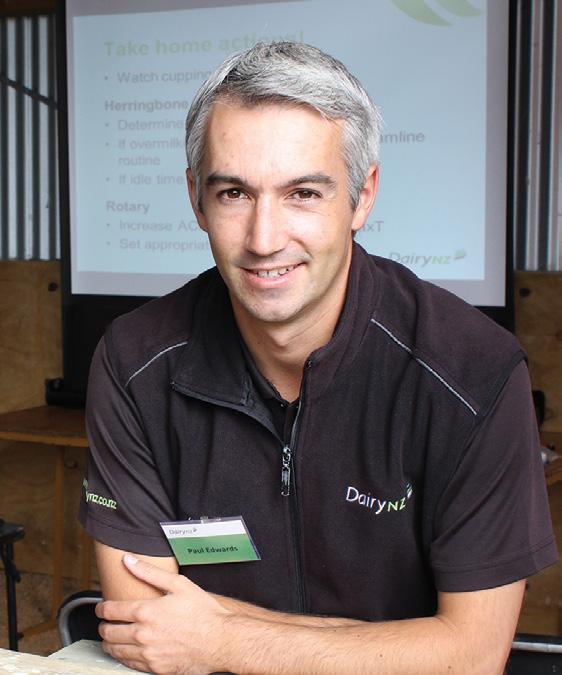
3 minute read
Want to change milking frequency? Plan for it
SYSTEMS: MILKING FREQUENCY
Want to change milkingfrequency? Plan for it
Words by: Anne Hardie
If you are going to change your milking frequency, make a plan about how you are going to achieve that goal because there’s no greater risk than changing the frequency and doing nothing else on the farm.
That was the advice from DairyNZ senior scientist, Dr Paul Edwards, at the Once-A- Day (OAD) Milking Conference in Nelson.
On the average New Zealand farm, about 50% of the season is spent milking cows, which is a good incentive to look at reducing the number of milkings. Nationally, about 45% of herds are milked twice a day (TAD) throughout the season, which shows it is no longer the norm, he said.
More than half the herds in the country have some form of alternative milking frequency at some stage of the season. Around 14% of those farms use 3in2, 31% use OAD and 8% are full-season OAD. Regionally, Northland uses OAD the most with 25% or more of herds, while the South Island is home to 3in2 milkings and then there are farmers using a combination of milking frequencies through the season.
OAD is the ultimate for flexibility because cows can be milked at any time through the day and he said that was hugely beneficial for improving the pool of labour. Milking at 9am meant the stayat-home parent down the road could still drop the kids off at school and pick them up again at 3pm.
“There’s a lot of people out there that potentially haven’t been employed on farms before, that once we start tweaking our milking intervals we can open up that pool of labour.”
HERD TESTING
When it comes to switching to OAD milking, herd testing records showed herds with lower production per cow were more likely to lift production or regain their original production compared with higher production herds that dropped production. However, Dr Edwards said the higher-production herds probably also had other changes in the shift to OAD such as removing feed from the system and he said that also had an impact.
Many of the lower-producing farms were still profitable and he suggested a fifth to a quarter of herds in NZ were potentially well suited to OAD milking, while higherproducing farms might be better suited to 3in2.
An experiment using farmlets on the Lincoln University Farm that compared TAD and 3in2 milkings, resulted in a 5% decrease in milksolids produced in the full season 3in2 herd, with protein more negatively affected than fat. The 3in2 herd was a quarter of a condition score higher than the TAD herd though when they were dried off at the end of the season. However, the experiment was just a one-year study with 31% heifers and no carry-over effects.
VARIED MILKING TIMES
A second experiment varied the milking times for 3in2 to see whether it was the number of milkings that drove results or the timing of the milkings.
The results showed no statistical difference between different milkings and his conclusion was that it was possible to use more attractive 3in2 milking times. He said longer milking intervals did produce slightly less protein, but the difference was too small to matter.
His key message was that there was so much variation from farm to farm that farmers needed to do their own numbers when they were considering changing their milking intervals.
Even if farmers don’t want to change to OAD or 3in2, there were still options for moving milking intervals around to change the timings of the morning and afternoon milkings.
If they brought the afternoon milking forward he said they needed good milking regimes in place to handle the larger morning milking.
His challenge to farmers was to question whether their current milking regime was the best option for them. Understand the why, he said, then work backwards from what you want to achieve and make a plan about how to achieve it.










